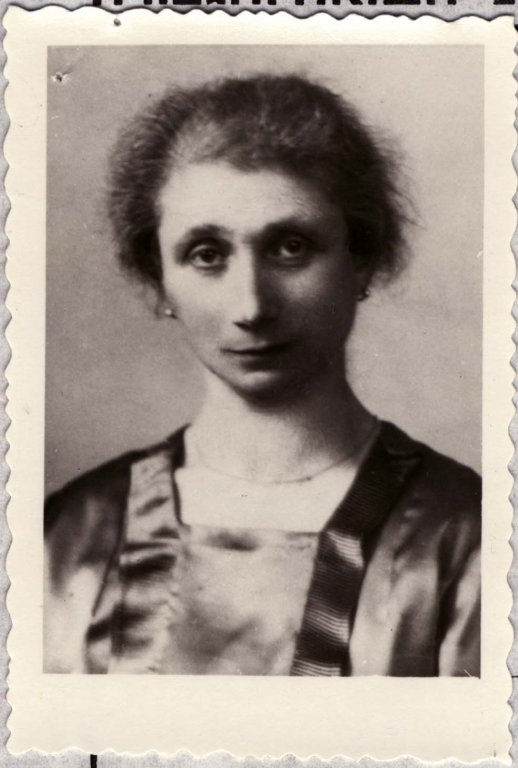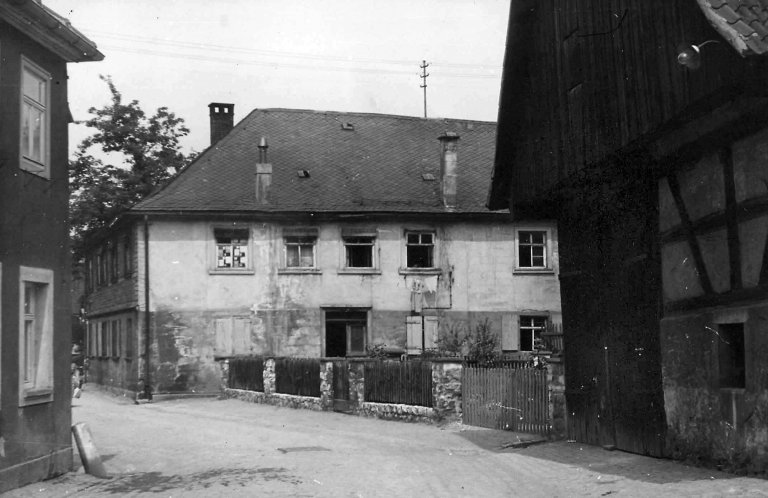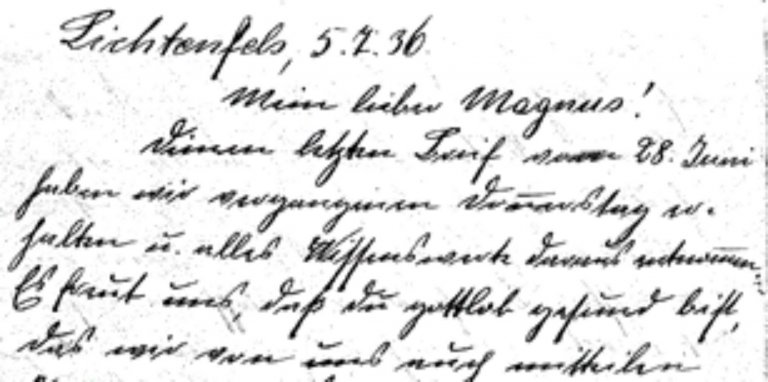Sofie Seliger
Author: Manfred Brösamle-Lambrecht

Sofie Gutmann was born in Creglingen on June 1, 1881, the daughter of Hermann (1851-1899) and Regine Gutmann née Adler (1849-1936). We know from her correspondence with her son that she had at least five siblings who emigrated with their families to the United States before 1940.
Founding an Family

Sofie married the thirty-one-year-old Jewish teacher Arnold Seliger in 1908, with whom she had their son Magnus Meir in 1913. The family lived in Neustadtgödens in East Frisia, where Arnold had a job as a teacher in the Jewish community; when this was eliminated in 1924 due to the shrinking of the community, the family moved to Weener/East Frisia; from there the road led to Lichtenfels, where Arnold served as a teacher, probably also as a preacher and cantor, from July 1925. The family lived on the ground floor of the so-called "Schächterhaus" in Judengasse 14 next to the synagogue. This house belonged to the Jewish community.
 © Stadt Lichtenfels
© Stadt LichtenfelsLife under the Nazi dictatorship
Already in 1933, son Magnus no longer saw a future in Germany and moved via Bamberg to Strasbourg, where he prepared for emigration to Palestine. At the end of 1933 he emigrated and accepted Palestinian citizenship in the town of Ramat Gan near Tel Aviv. After difficult early years, he established himself there and started a family. The numerous surviving letters that Arnold and Sofie wrote to their son show Sofie as a caring mother, concerned about her son's welfare, who gave him advice on all aspects of life, clothing and sometimes money.

The Seligers experienced the hardships of state-desired and organized anti-Semitism even more intensively than others, since their professional and economic basis was closely linked to Jewish cultural and community life.
In 1934, the Seligers had built a house in Bamberg, which they had rented out, but which they intended to occupy themselves from December 1, 1938. This was no longer to happen.
November pogroms 1938: Death under unexplained circumstances
The November pogroms destroyed the lives of Sofie and Arnold Seliger. What exactly happened on November 10, 1938, cannot be proven to this day. What is known for sure is that the synagogue was desecrated and looted by a jeering horde of Nazi thugs. Then they attacked the Seligers' apartment. Arnold Seliger was taken into "protective custody," and his wife was left defenseless against the uninhibited perpetrators. The entire furnishings of the apartment were thrown into the street and destroyed, and Sofie Seliger was attacked with knives. In the evening she remained missing, and it was not until December 3 that her body was found in the Main River near Reundorf. The Nazi authorities spoke of suicide and closed the files.
A post-war charge of murder and rape against known Nazi thugs was dropped for lack of evidence.
Walter S.G. Kohn watched parts of the events from the second floor of the Schächterhaus:
"Meanwhile, they set about the community center itself and broke the shutters of the apartment of teacher Seliger on the ground floor. He came up to us in his shirt. His wife stayed downstairs and was there when they destroyed everything that could only be hooked and torn small. Books, dishes, bedspreads were in tatters and shards, either in the apartment itself or in the street. Seliger [...] went out into the street after daybreak and was arrested for a short time. His wife was terribly affected by the loss of all her possessions, especially since her husband did not come back then either.
From my own recollection, I do not know what happened to her. She was sitting under her rubble when we left that evening, then disappeared without a trace for weeks until her body was pulled out of the water near Reundorf. The Nazis said it was suicide; I only know that a few weeks before, in conversation with my mother, she had taken the very strong stand that under no circumstances should one take one's own life, no matter how bleak and hopeless the situation might seem [...]"
Walter S.G. Kohn, eyewitness
